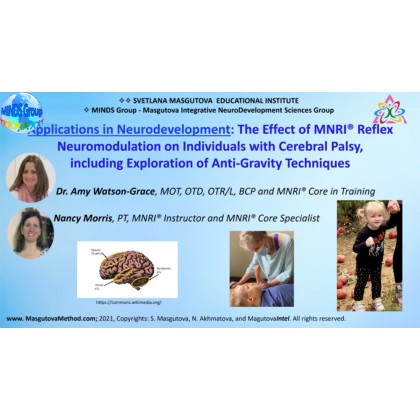
Courses, Conferences & Tools
Applications in Neurodevelopment: The Effect of Reflex Neuromodulation on Individuals with Cerebral Palsy, including Exploration of Anti-Gravity Techniques
Applications in Neurodevelopment: The Effect of Reflex Neuromodulation on Individuals with Cerebral Palsy, including Exploration of Anti-Gravity Techniques
Learning to move functionally is a challenge for individuals diagnosed with cerebral palsy. Functional movement begins with the ability to organize and perform movements against gravity, the essential life force that grounds us to the Earth.
Our expansive genetic program of primary reflex patterns is essential in establishing the body’s ability to organize movement to keep us grounded and stable, while at the same time enabling us for postural control, and to move progressively higher through levels of space for mobility and accomplishing the hands-on tasks.
In this lecture, we explore the concept of gravity and how, beginning in infancy, we develop the ability to anchor our bodies with terrestrial attraction and then eventually into vertical positions for function and mobility. This lecture discusses the unique challenges that occur in individuals with cerebral palsy that make this task difficult, as well as exploring the role of the primary reflex patterns in building and restoring the pathways necessary to learn to move against gravity. A sample of MNRI exercises are demonstrated to show their effect on supporting individuals with cerebral palsy to develop antigravity control.
Dr. Amy Watson-Grace, MOT, OTD, OTR/L, BCP and MNRI® Core in Training
Nancy Morris, PT, MNRI® Instructor and MNRI® Core Specialist
Video Runtime: 2 hours, 22 minutes, 27 seconds.




